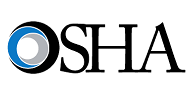
A local Chicago hospital finds themselves on the wrong side of OSHA, a situation that could have been avoided.
As reported in the Chicago Tribune (L. Schencker, Feb. 24, 2021), the Community First Medical Center in Portage Park, IL received OSHA citations of the “serious” type with a resulting fine in excess of $13,000 for failure by the hospital to implement a respiratory protection program, and for failing to perform fit testing on staff for the types of masks the hospital was providing. The OSHA inspection came following COVID-related deaths of two nurses, prompting the hospital’s nurses’ union to file a complaint.
The science has consistently shown that a layered mitigation strategy (use of proper fitting face masks, social distancing, personal hygiene, cleaning and disinfecting, contact tracing, engineering controls and effective building ventilation) will provide the greatest level of protection against infection and transmission of viruses such as SARS-CoV-2
The available interim guidance (CDC, OSHA) for workplaces open or reopening recommends employers implement a respiratory protection program and ensure employees, staff and professionals are appropriately fit tested with N95 masks to help reduce the risk of transmission of the SARS-CoV-2 virus between employees, staff, patients, contractors, and visitors. OSHA is increasing their vigilance on inspections of businesses and healthcare facilities with particular attention on high risk locations. There is an increase in workplace citations with particular emphasis on COVID-related complaints.
What is a Respiratory Protection Program?
A respiratory protection program is an OSHA required program for workplaces requiring or categorized for PPE. The program is to be provided in both written form and through applicable training and fitting. Fit testing can be administered by an employer or experienced and trained contractor and is designed to ensure that employees and staff are properly protected from contaminants and exposure risks within the workplace through the use of and wearing of properly fit respiratory protection, such as an N-95 mask or respirator. Airborne contaminants can range from viruses and chemical vapors all the way to inorganic metal fumes. As an employer, you are responsible for determining or identifying any respiratory contaminants your employees and staff may face in your workplace and to provide protection from these contaminants.
Protection for employees and staff can range from changing work practices and engineering controls to the last line of defense, Personal Protective Equipment (PPE). Keeping workforce safe with PPE is but one control in mitigating risk. Engineering controls can take the form of mechanical changes and recalibrations, filtration systems and air purification systems. Additional mitigation measures include implementation of barriers, such as the plexiglass dividers between a worker and a contaminant, and redesign of workspaces. Administrative controls include health & safety plans for hygiene (hand washing), physical distancing, and rotating workhours. And PPE can take the form of cloth masks, surgical masks, respirators such as N95, half face and full face are determined by evaluating the workplace, the risks, and the contaminant of concern.
What is PPE?
In terms of a respiratory protection program, PPE means a respirator. There are many different kinds of respirators: N95, half face, full-face, powered air-purifying respirator etc. It is the employer’s responsibility to identify and understand the type of protection, respirator, their employees and staff need for the workplace, when this equipment is needed, and to provide access and availability to this equipment if it is required.
Looking at the popular, and often hard to find, N95 filtering face piece as a PPE means an understanding that such protection is necessary particularly for the high-risk categories related to COVID-19, first responders, health care, and medical services support. But this does not mean other high trafficked, closed, and public facing jobs and workplaces aren’t also at risk. N95 respirators are far less expensive than half or full face respirators, are far more comfortable and light weight to wear, and are disposable. Most importantly, N95 respirators (without the valve) filter the air coming into your body as well as the air going out. N95 respirators are certified by the National Institute for Occupational Safety and Health (NIOSH) to remove 95% of particles .3 microns in size or larger. Many businesses at the start of the pandemic rushed out to get N95 respirators as quickly as they could and provide them to their workers. And for many employers, they likely thought that they had done all they needed to do to comply. A fit and training component with any respirator, including N95 respirators, is the uniqueness of an individual’s face. A 6’9” 290 lb. staff member and a 5’10” 180 lb. staff member likely will not have the same size or face shape making fitting different. A single type of N95 respirator may fit well for one but not the other.
Why is Fit Testing Important?
Fit testing is a procedure that verifies quantitatively or qualitatively whether or not a particular respirator is adequately fitted to a user’s face, thus providing the protection this equipment is designed to provide. With N95, commonly a qualitative test is performed where a user, while wearing an N95 respirator, is exposed to a solution that is either bitter or sweet. Assuming the mask is properly fitted, the user should not sense the material by taste or smell (it shouldn’t be getting into the mask). If the user senses the solution, then the mask does not fit the user properly or protectively and a different style or size mask must be sought and tried. If an N95 respirator does not fit the user, the level of protection is greatly reduced and is no longer considered compliant. Fit testing is a vital part of any respirator protection program, and failing to provide fit testing in the age of COVID-19 could cost people’s lives.
